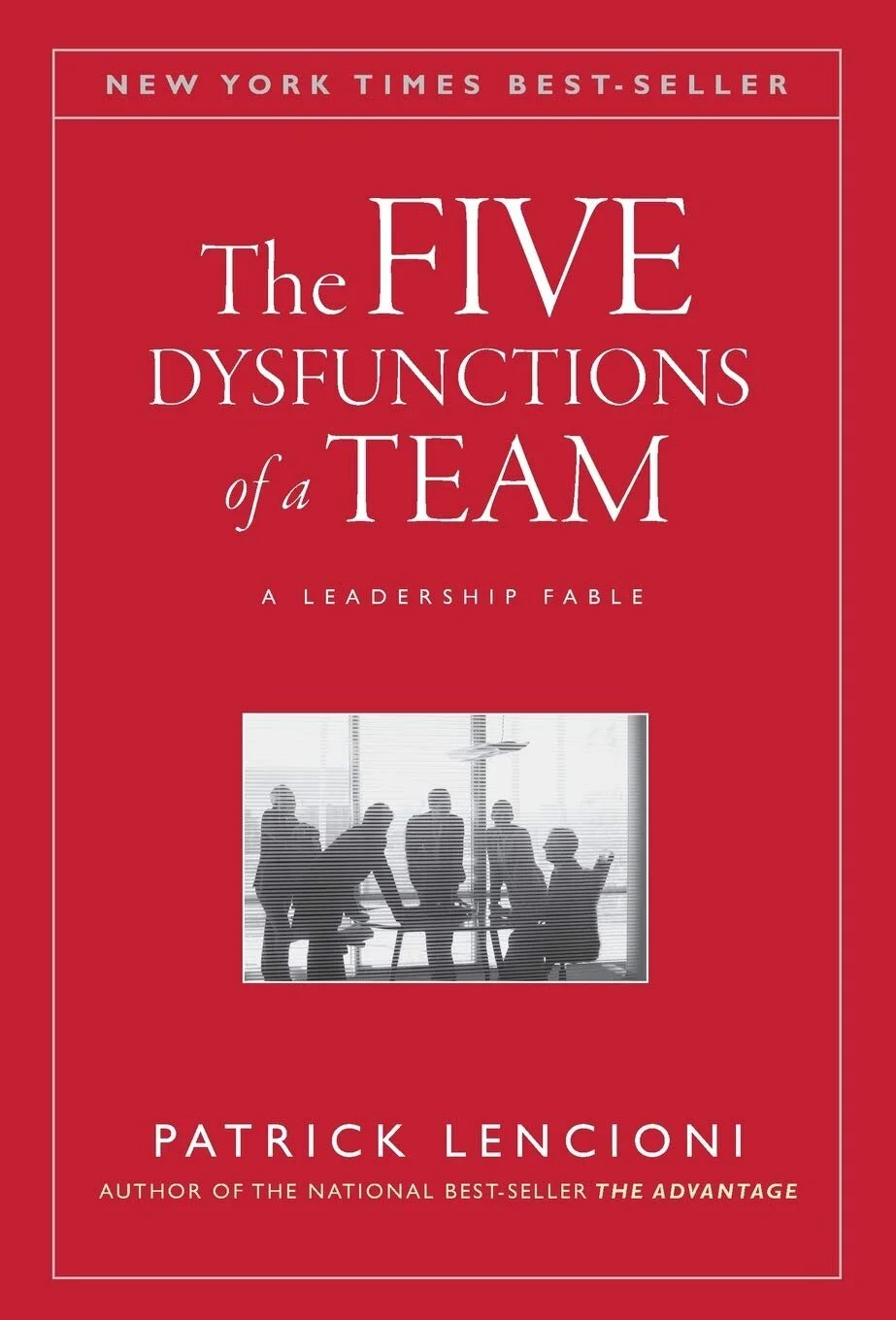The Five Dysfunctions of a Team
“Not finance. Not strategy. Not technology. It is teamwork that remains the ultimate competitive advantage, both because it is so powerful and so rare.”
The Five Dysfunctions of a Team
By Patrick Lencioni
Publisher: Jossey-Bass
Published: 2002
ISBN-13: 9780787960759
229 pages
This is a business book—yes—but if you are a lover of fiction, you would probably also enjoy this 229-page hardcover book. The Five Dysfunctions of a Team is a highly readable leadership fable.
The book has two sections: The Fable and The Model. A large part of this review talks about the former. In section The Model, it provides more information about the model to help readers understand and overcome the five dysfunctions. There is also a team assessment sheet available for use.
Here is some background to the story: DecisionTech, Inc. is one of the most talked-about, well-funded and promising start-up companies in the Silicon Valley. The company; however, after its first few months of glory began to experience a “downturn”: slip of critical deadlines, resignation of key employees, gradual deterioration of morale. Two years have passed (for a technology start-up it is a lifetime) and the company is not achieving its revenue and market goals.
The executive team comprises of a key group of people. The primary character is Kathryn Peterson, the newly appointed CEO. Over the next chapters, you will see how her direct reports—a group of young and brilliant senior executives—interact with one another. Kathryn is experiencing difficulties getting through to them. She is very experienced in the corporate world and nearing retirement, but have no direct background working for a company such as DecisionTech. As you read along, you will see how she turns the team around. The transformation did not happen overnight but her persistence, determination and her constructive confrontation approach makes it possible.
Kathryn uses the model—The Five Dysfunctions of a Team—to drive her points across:
Absence of TRUST (Invulnerability)
Fear of CONFLICT (Artificial Harmony)
Lack of COMMITMENT (Ambiguity)
Avoidance of ACCOUNTABILITY (Low Standards)
Intention to RESULTS (Status and Ego)
The model is drawn in the format of a pyramid with “Absence of Trust” at the bottom of the pyramid and “Intention to Results” at the top. She explains the model at the first off-site meeting she organized for her team. I’m oversimplifying things here but if you read the story, you will see how hard she has to work at breaking through to her colleagues. Lencioni describes how Kathryn runs her staff after her initial team-building off-sites and the significant investment in time.
I also like the author's interesting comparison between team meetings and movies. They are both about the same length, approximately 90 minutes to 2 hours. Usually we hate meetings because they are boring (but they are interactive and relevant). Movies have one key ingredient—conflict—and that makes them interesting. We can make a meeting interesting by allowing good conflict.
One more thing that I picked up from this book is putting the wrong people in the wrong position. Jeff Shanley, founder and former CEO, is a perfect example in this book. He is great at what he does but he cannot lead a team, which is reflected in the company’s performance and his eventual removal as CEO. However, put him in the right position, he thrives. He is still on the board of directors but he now reports to one of the executive team members, and that is fine by him. He is happy.
According to Lencioni, the book is based on his work with CEOs and their executive teams, but its theories are applicable for anyone interested in teamwork, whether as a team leader or as a member of a team. I certainly feel these principles can be applied—not only in a business environment—but also in personal situations such as marriage, family, book clubs; well, almost in any setting! This business book is a page-turner.
